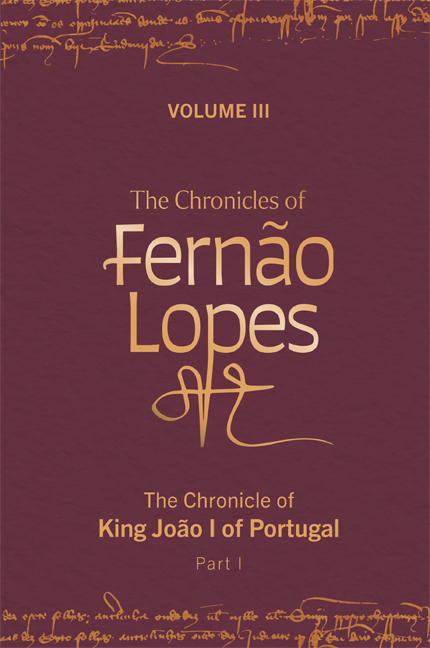Chapter 49 - How the Master decided to mint money, what was the alloy used and what was the design from which it was minted
Published online by Cambridge University Press: 28 December 2023
Summary
When once the Master had set about minting money, he immediately decided to mint silver reais. But first you should be made aware that, at the time, when the Master declared himself ruler and defender of the realm, its currency was what we have already mentioned, namely: dinheiros from the reign of King Afonso IV, nine of which were worth one soldo, with 20 soldos being worth one libra; barbudas, which were valued at two soldos and four dinheiros; graves, each of which was worth 14 dinheiros; and pilartes, which were worth seven dinheiros, as was duly written down when we spoke of the debasement of the currency brought about by King Fernando. The currency also included reais of standard silver worth 10 dinheiros each, 56 of which constituted one mark. We shall now explain why such names were given to these coins.
When King Fernando went to war against King Enrique, as you have heard, there accompanied him in the invasion of Castile a large French force known as the White Company. They were armed in the following fashion: they wore bascinets with visor, arming cap and camail, and these [items together] were known as a barbuda. The coin of that name was stamped on one side with a saltire, in the middle of which was a shield displaying the five quinas, while on the other side there was a barbuda with its visor. These men-at-arms carried graves with small banners on their tips: these weapons are nowadays called ‘lances’. The youths who wore their barbudas over their pourpoints were known as pilartes and later they came to be known as ‘grave bearers’. Nowadays we call the barbudas ‘bascinets with camail’ and the youths, ‘pages’.
From the names given to that armour and those weapons the names of the coins were derived. The grave was stamped with a lance bearing a small banner on its tip, while on the other side was a saltire and the quinas. With these coins circulating together, the crossed dobra was worth 5 libras, the Moorish dobra 4½, and the gold franc from France 4. The mark made from standard silver was valued at 11 dinheiros, or 22 libras.
- Type
- Chapter
- Information
- The Chronicles of Fernão LopesVolume 3. The Chronicle of King João I of Portugal, Part I, pp. 103 - 105Publisher: Boydell & BrewerPrint publication year: 2023

